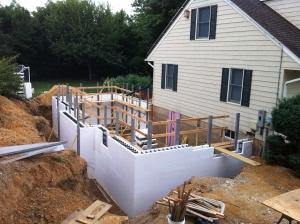Phone number
609.300.7522
Passive House
When it comes to changing the world without inventing some new amazing technology, I don’t think anything compares to Passive House Design and construction. Using 90% less energy to operate a home or business changes the game completely. Becoming net-zero is easily attainable. Passive House Design can be implemented with new construction or as a retrofit. This is the way we should be building now, but we will ultimately build this way as fossil fuels become increasingly more expensive. Did I mention, these homes are the most comfortable to live in and they’re really healthy too!
The Passive House concept represents today’s highest energy standard with the promise of slashing the heating energy consumption of buildings by an amazing 90%. Widespread application of the Passive House design would have a dramatic impact on energy conservation. Data from the U.S. Energy Information Administration shows that buildings are responsible for 48% of greenhouse gas emissions annually and 76% of all electricity generated by U.S. power plants goes to supply the Building Sector [Architecture2030]. It has been abundantly clear for some time that the Building Sector is a primary contributor of climate-changing pollutants, and the question is asked: How do we best square our building energy needs with those of our environment and of our pocketbook? In the realm of super energy efficiency, the Passive House presents an intriguing option for new and retrofit construction; in residential, commercial, and institutional projects.
A Passive House is a very well-insulated, virtually air-tight building that is primarily heated by passive solar gain and by internal gains from people, electrical equipment, etc. Energy losses are minimized. Any remaining heat demand is provided by an extremely small source. Avoidance of heat gain through shading and window orientation also helps to limit any cooling load, which is similarly minimized. An energy recovery ventilator provides a constant, balanced fresh air supply. The result is an impressive system that not only saves up to 90% of space heating costs, but also provides a uniquely terrific indoor air quality.
A Passive House is a comprehensive system. “Passive” describes well this system’s underlying receptivity and retention capacity. Working with natural resources, free solar energy is captured and applied efficiently, instead of relying predominantly on ‘active’ systems to bring a building to ‘zero’ energy. High performance triple-glazed windows, super-insulation, an airtight building shell, limitation of thermal bridging and balanced energy recovery ventilation make possible extraordinary reductions in energy use and carbon emission.
Today, many in the building sector have applied this concept to design, and build towards a carbon-neutral future. Over the last 10 years more than 15,000 buildings in Europe – from single and multifamily residences, to schools, factories and office buildings – have been designed and built or remodeled to the passive house standard. A great many of these have been extensively monitored by the Passiv Haus Institut in Darmstadt, analyzing and verifying their performance. Even governmental agencies have adopted passive house standards in their policy-making (read more about the EU Commision’s intent to implement the Passive House Standard.
Not only did we use Serious Material super insulated windows in our Passive House, but we retrofitted our existing 10 foot slider Serious Material glass.












